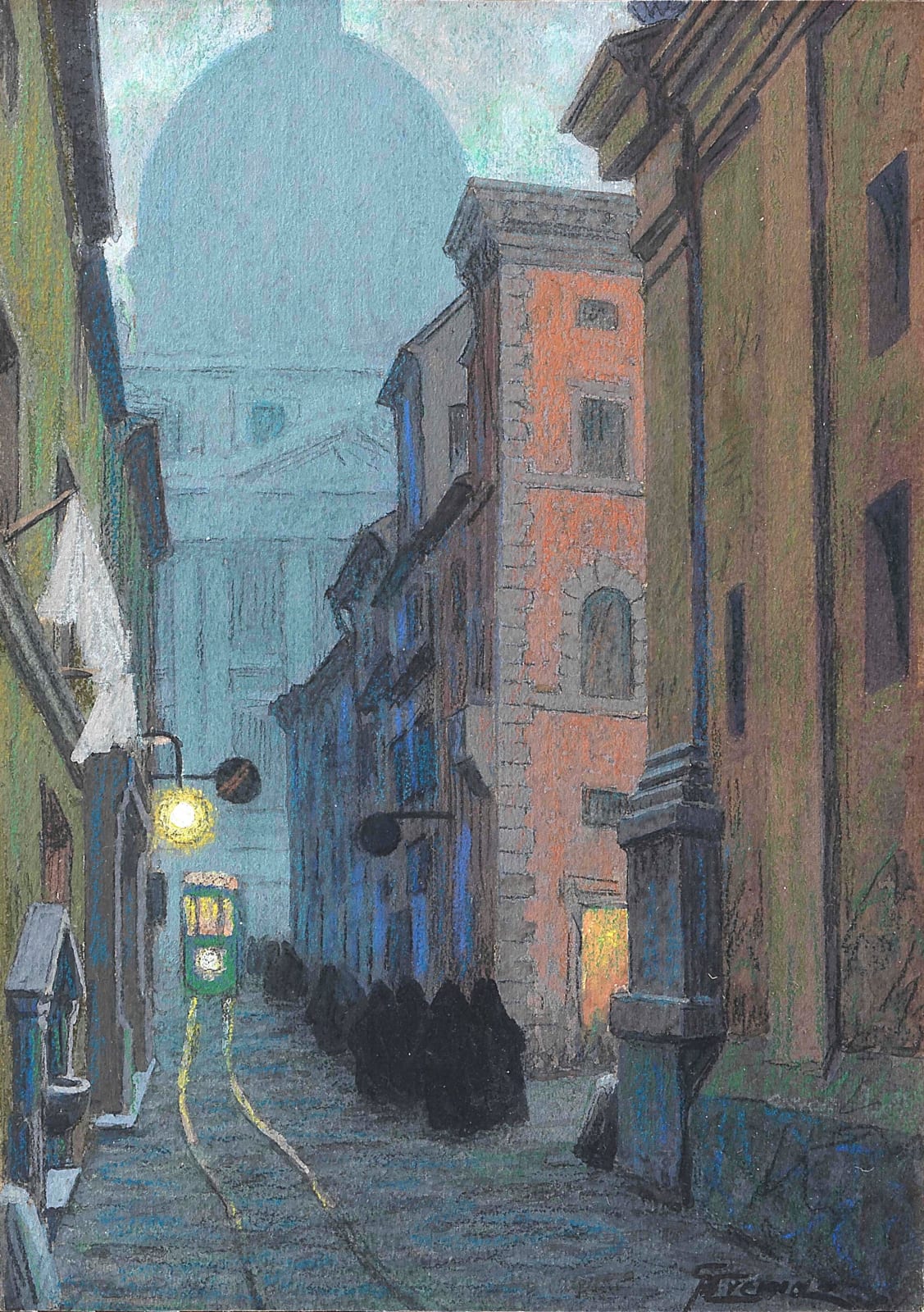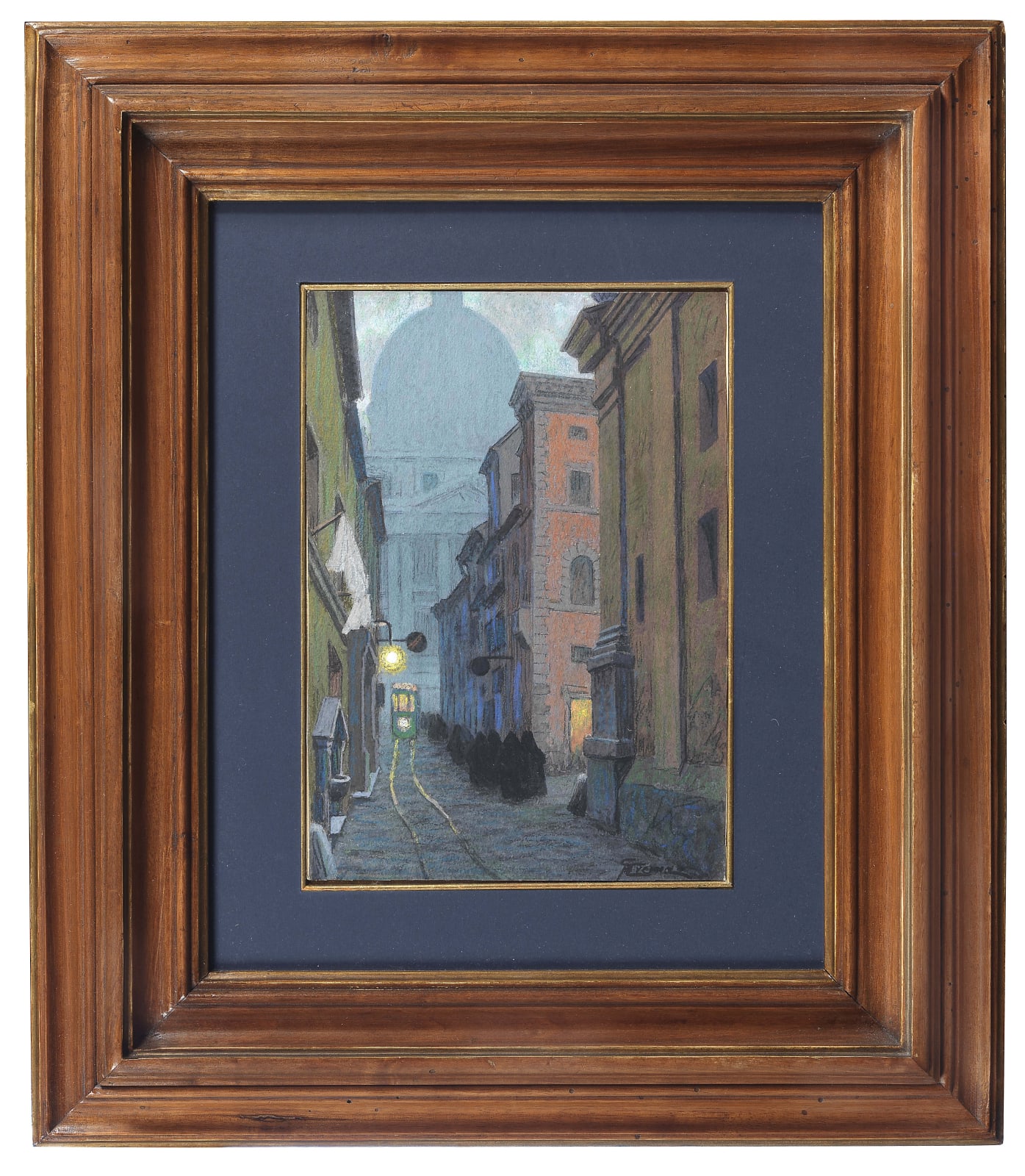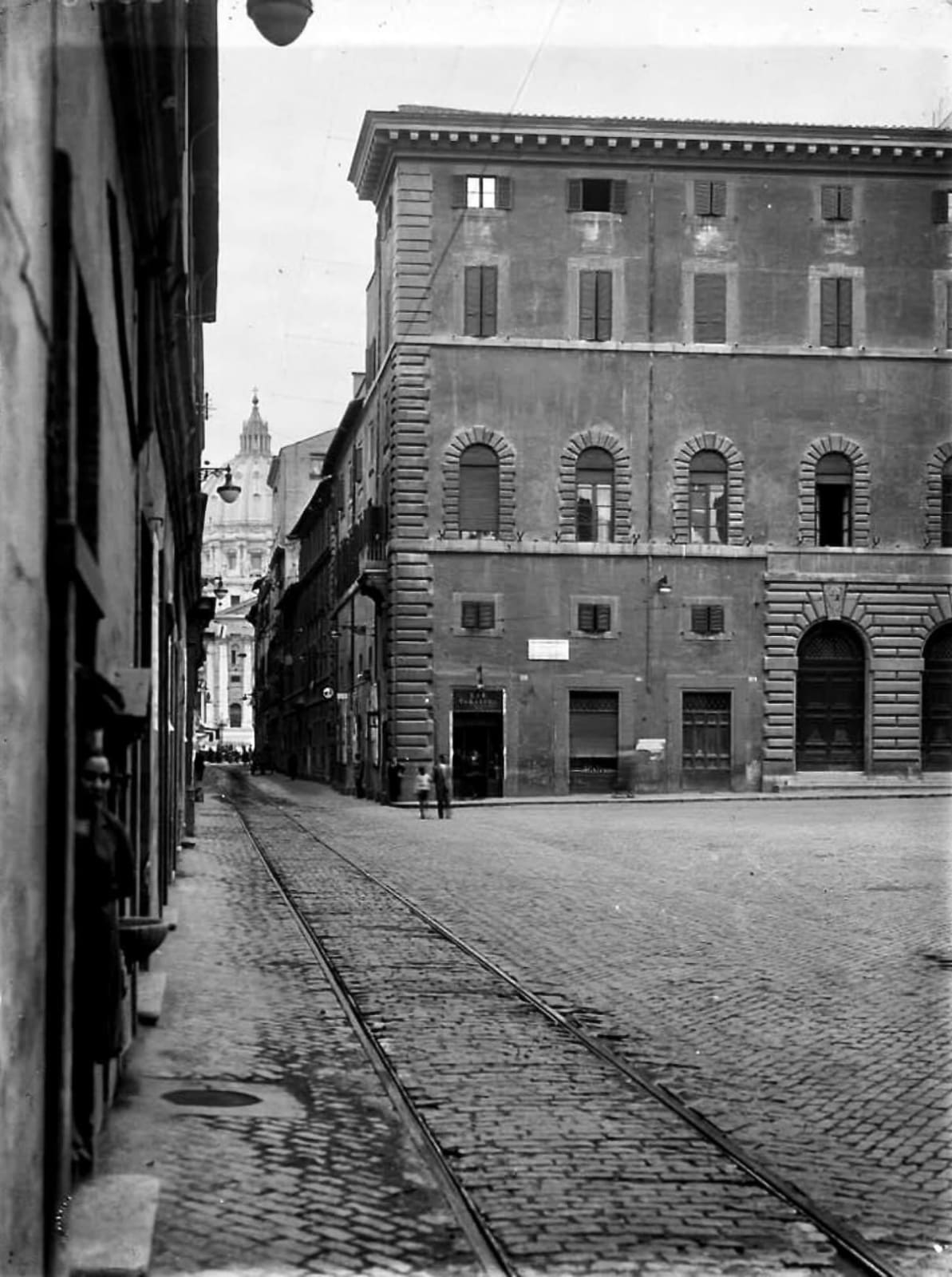Giovanni Battista CREMA Italian, 1883-1964
Further images
Publications
Giovanni Battista Crema oltre il divisionismo,exhibition catalogue by Manuel Carrera e Lucio Scardino, Fondazione Ferrara Arte 2021.
Our pastel is one of the rare views of Rome painted by the artist from Ferrara.
It depicts Piazza Scossacavalli, a famous square in Rome once located in the center of the 'Spina di Borgo' and disappeared following the demolitions carried out for the opening of Via della Conciliazione, between 1937 and 1941.
The square was bordered by "Borgo Vecchio" (the road that connected Ponte Sant’Angelo with San Pietro) and by Via Alessandrina, opened in 1499 by Alexander VI also known as Borgo Nuovo. Noble buildings overlooked it: the Torlonia palace (the only one still existing in its place); the church of San Giacomo, built on a project by Antonio da Sangallo the Younger in the second half of the 16th century, demolished in 1937; the Convertendi palace, rebuilt on one side of via della Conciliazione. On the fourth side stood the Palazzo della Rovere. In the center of the square there was a fountain probably built by Carlo Maderno in 1614, dismantled in 1940 and partially reassembled in 1958 in front of the church of Sant’Andrea della Valle.
The painting, created in the third decade of the 1900s, has a prevalence of dark tones characteristic of twilight and by contrast the scene is illuminated by the lights of a street lamp and the lights of a tram passing through Borgo Vecchio. In the square, depicted for a glimpse, part of the façade of the Convertendi palace is visible, while at the end of the street the bulk of the dome and the façade of San Pietro dominates in a suggestive semi-darkness. of San Giacomo which closed the square to the east while on the left side Giovanni Battista Crema depicted one of the two pavonazzetto marble fountains leaning against Palazzo della Rovere, bearing the heraldic attributes of the Borghese family.
JOIN OUR MAILING LIST
Subscribe to our mailing list in order to receive news on new acquisitions, exhibitions, special previews and more!
* denotes required fields
We will process the personal data you have supplied to communicate with you in accordance with our Privacy Policy. You can unsubscribe or change your preferences at any time by clicking the link in our emails.





